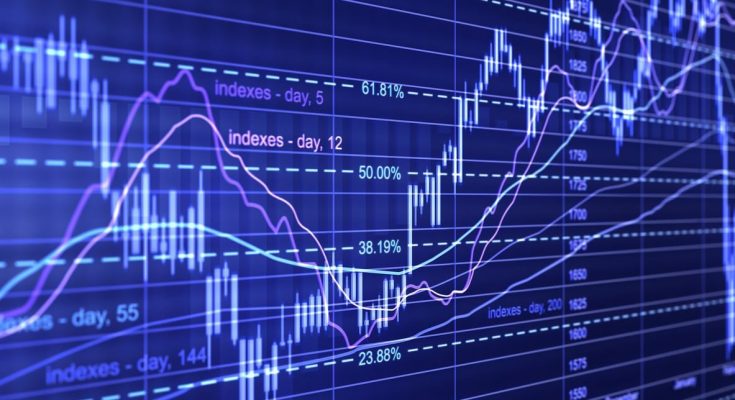The Benefits of Trading CFDs in the Forex Market
CFDs are contracts that allow you to speculate on the price movements of forex pairs without owning the underlying currencies. Learn how CFDs can help you hedge your forex exposure, diversify your portfolio, and take advantage of various trading strategies and indicators.
How CFDs can help you hedge your forex exposure and diversify your portfolio
CFDs, or contracts for difference, are derivatives that allow you to trade on the price movements of an underlying asset, such as a forex pair, without actually owning or exchanging the asset. CFDs are traded on margin, which means you only need to deposit a small percentage of the full value of the trade to open a position. This gives you leverage, which can magnify your profits or losses.
One of the main benefits of trading CFDs in the forex market is that you can hedge your exposure to currency fluctuations. For example, if you have a long position in a forex pair, such as EUR/USD, and you expect the euro to weaken against the dollar, you can open a short CFD position in the same pair to offset your risk. This way, you can protect your profits or limit your losses if the market moves against you.
Another benefit of trading CFDs in the forex market is that you can diversify your portfolio by accessing a wide range of currency pairs, including major, minor, and exotic pairs. You can also trade CFDs on other asset classes, such as indices, commodities, stocks, and cryptocurrencies, from the same platform. This allows you to take advantage of different market opportunities and reduce your overall risk.
The advantages and disadvantages of trading CFDs versus spot forex
Trading CFDs versus spot forex has its own advantages and disadvantages. Some of the advantages are:
- CFDs offer more flexibility and convenience, as you can trade 24 hours a day, five days a week, without having to worry about rollover fees or delivery dates.
- CFDs allow you to trade both long and short, which means you can profit from both rising and falling markets.
- CFDs have lower transaction costs, as you only pay the spread and the overnight financing charge, and you do not incur any commissions or exchange fees.
- CFDs enable you to use leverage, which can amplify your returns, as well as your risks.
Some of the disadvantages are:
- CFDs are subject to market risk, which means you can lose more than your initial deposit if the market moves against you. You also have to pay interest on the borrowed funds, which can reduce your profits or increase your losses.
- CFDs are subject to counterparty risk, which means you are relying on the CFD provider to fulfill the contract and to provide fair and accurate prices. If the CFD provider goes bankrupt or defaults on its obligations, you may lose your money or your positions may be closed without your consent.
- CFDs are subject to regulatory risk, which means you have to comply with the rules and regulations of the jurisdiction where the CFD provider is based. Different countries may have different laws and standards regarding CFD trading, which can affect your rights and obligations as a trader.
The best strategies and indicators for trading CFDs on major and minor currency pairs
There is no one-size-fits-all strategy or indicator for trading CFDs on major and minor currency pairs, as different traders may have different goals, preferences, and risk appetites. However, some of the common strategies and indicators that can help you trade CFDs on forex pairs are:
- Trend following: This strategy involves identifying and following the direction of the dominant market trend, using tools such as moving averages, trend lines, and chart patterns. The idea is to enter a long position when the market is in an uptrend, and a short position when the market is in a downtrend, and to exit when the trend reverses or loses momentum.
- Range trading: This strategy involves identifying and trading within a price range, using tools such as support and resistance levels, oscillators, and candlestick patterns. The idea is to buy low and sell high, or vice versa, within a defined price range, and to exit when the price breaks out of the range or shows signs of exhaustion.
- Breakout trading: This strategy involves identifying and trading the breakouts of significant price levels, such as support and resistance, trend lines, chart patterns, and volatility indicators. The idea is to enter a long position when the price breaks above a resistance level, and a short position when the price breaks below a support level, and to exit when the price reaches a target level or shows signs of reversal.
- Scalping: This strategy involves taking small profits from frequent trades, using tools such as price action, technical analysis, and market sentiment. The idea is to exploit short-term price movements and market inefficiencies, and to exit quickly before the market changes.
The risks and challenges of trading CFDs in volatile and uncertain forex markets
Trading CFDs in volatile and uncertain forex markets can be rewarding, but also risky and challenging. Some of the risks and challenges that you may face are:
- Market volatility: Forex markets can be highly volatile, especially during major economic events, news releases, and political developments. This can cause sudden and large price movements, which can affect your profits or losses, as well as your margin requirements and stop-loss orders.
- Market liquidity: Forex markets can also experience periods of low liquidity, especially during off-peak hours, holidays, and weekends. This can result in wider spreads, slippage, and gaps, which can affect your execution and pricing, as well as your risk exposure and trading costs.
- Leverage risk: Trading CFDs on margin can increase your potential returns, but also your potential losses. If the market moves against you, you may face a margin call, which requires you to deposit more funds or close your positions. If you fail to do so, your positions may be closed automatically, resulting in a loss of your entire investment or more.
- Counterparty risk: Trading CFDs with an unregulated or unreliable CFD provider can expose you to the risk of fraud, manipulation, or default. You may not receive fair and accurate prices, or your orders may not be executed properly. You may also lose your money or your positions if the CFD provider goes bankrupt or fails to meet its obligations.
Conclusion
Trading CFDs in the forex market can offer many benefits, such as hedging, diversification, flexibility, and leverage. However, it also involves significant risks and challenges, such as market volatility, liquidity, leverage, and counterparty risk. Therefore, you should always do your homework, have a trading plan, use risk management tools, and choose a reputable and regulated CFD provider before you start trading CFDs on forex pairs.




